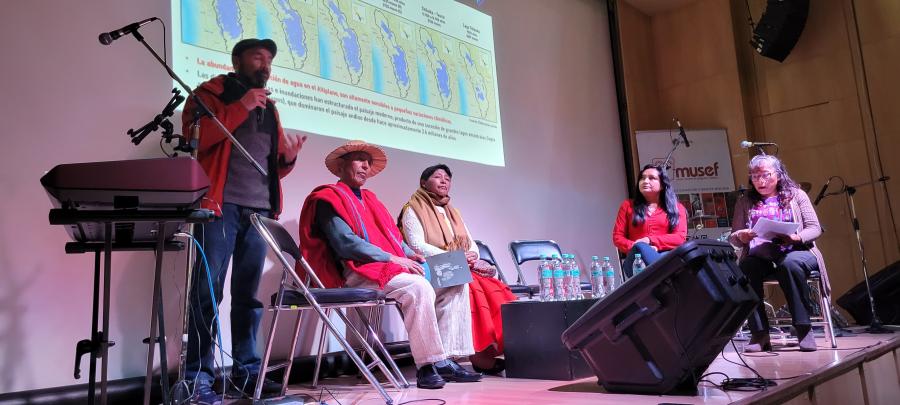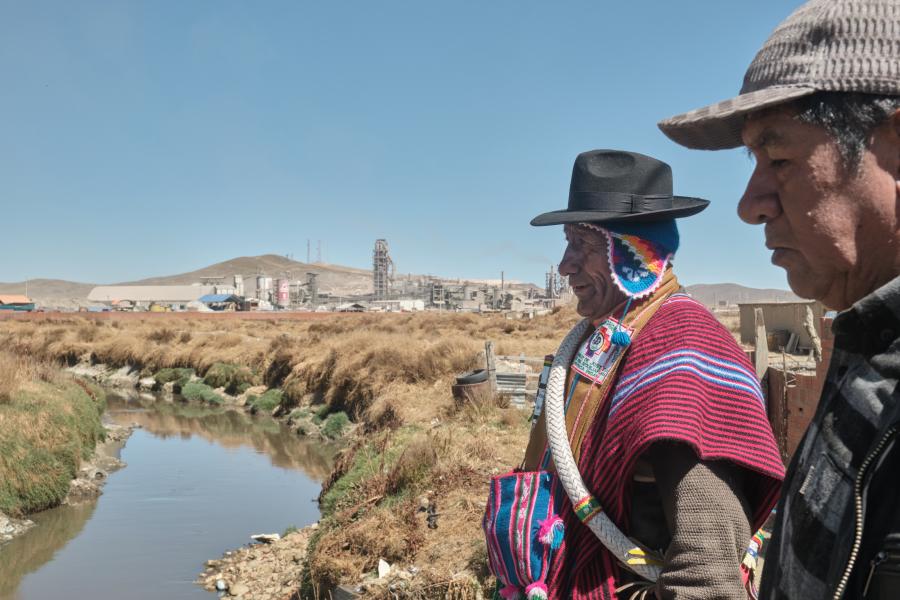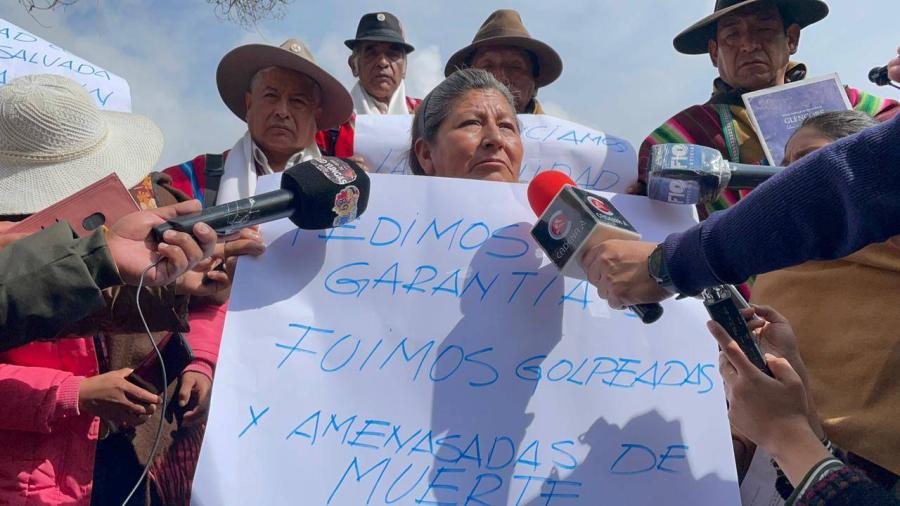
For the Andean Peoples in the South American highlands, Mama Qota is the goddess of water, the mother of waters. Mama Qota is also known as Lake Titicaca, an expansive body of water spanning some 8,300 square kilometers at an altitude of 3,800 meters above sea level on the border of Bolivia and Peru. Cultural Survival staff traveled the south of the American continent to document the situation facing Lake Titicaca and to speak with researchers, activists, academics, and residents of riverside communities. They shared their testimonies and findings about the pollution of the lake, the decrease in water level, and the death of endemic species, among other issues.
In the Aymara community of Quehuaya, Bolivia, located on the shores of Lake Titicaca, also known as Wiñaymarka, Oscar Limachi (Aymara) awaited us. Limachi is dedicated to tourism and the manufacture of crafts with reeds. With him, we toured part of the minor lake of Titicaca, Lago Menor, and visited Pariti Island, which, according to Limachi, has one of the best views of the lake. Limachi told us that in the mid-1970s, the lake had a depth of two meters; now it ranges from 30-50 cm in its deepest parts. “It was very crystalline. We even drank from it—it had no smell, there were good reeds, good algae, and large fish,” he said.

Oscar Limachi (Aymara) is an artisan and tourist guide in the Lake Titicaca region.
For these communities, many of whom are Aymara, the decrease in water level has transformed their way of life. Previously, they were communities dedicated to fishing, and now they have to look for other sources of economic income. “The local population is now out of work because of fish. Before we lived off of fish, [but] the lake has been lowered and the fish are lost. I was a fisherman before and that’s why I dedicate myself to tourism. What are we going to live on?” Limachi asks.
Jorge Molina is a researcher at the Institute of Hydraulics and Hydrology of the Universidad Mayor de San Andrés in Bolivia, one of the institutions that, along with other universities, agencies, and ministries, received a report from the National Naval Hydrography Service of Bolivia last year that warned of a worrying downward trend in the level of the lake. Molina told us that in 2023, the lake reached its lowest
level in more than 70 years. He clarified that this low level is not the result of a single year of water loss, but “the result of several years, probably since 2002-2003, almost 20 years in which a tendency towards this decrease in levels is evident.”
Molina explained that “the level of a lake is maintained by a balance between the inflows and outflows of water. [The inputs] are normally rain and the contribution of the rivers in its basin, and are compensated in a water balance with the outputs.” In the case of Titicaca, the main outlet of water is evaporation; Molina said that 92 percent of the water that leaves the lake is through evaporation, and 8 percent leaves through the Desaguadero River, its main effluent. In the long term, Molina said, “The balance of water inputs and outputs would have to be equal to zero, that is, inputs are equal to outputs. [However,] for a period of about 20 years, the balance can be a surplus or a deficit.” Currently, Lake Titicaca is experiencing a deficit water balance. There are multiple factors contributing to the deficit, but among the most important are climate change and pollution.
French researcher Xavier Lazzaro, who is also a scholar and enthusiast of Lake Titicaca, commented, “As a scientist, I had the chance to study Lake Titicaca in 1979–80, at a time when the lake was very pristine, very well preserved like any lake in the Andes mountain range, because there was little population. El Alto did not exist. I returned 30 years later and I couldn’t believe what I saw: a lake impacted
by the entire urbanization of El Alto, with rivers of sewage that flow into the smaller lake.” The city of El Alto, which borders La Paz and is the second largest city in Bolivia, has had accelerated growth since its founding in 1985. Furthermore, it is crossed (along with the municipalities of Viacha and Laja) by several rivers that carry all types of domestic and industrial waste and pollutants, and which flow into
Lago Menor.
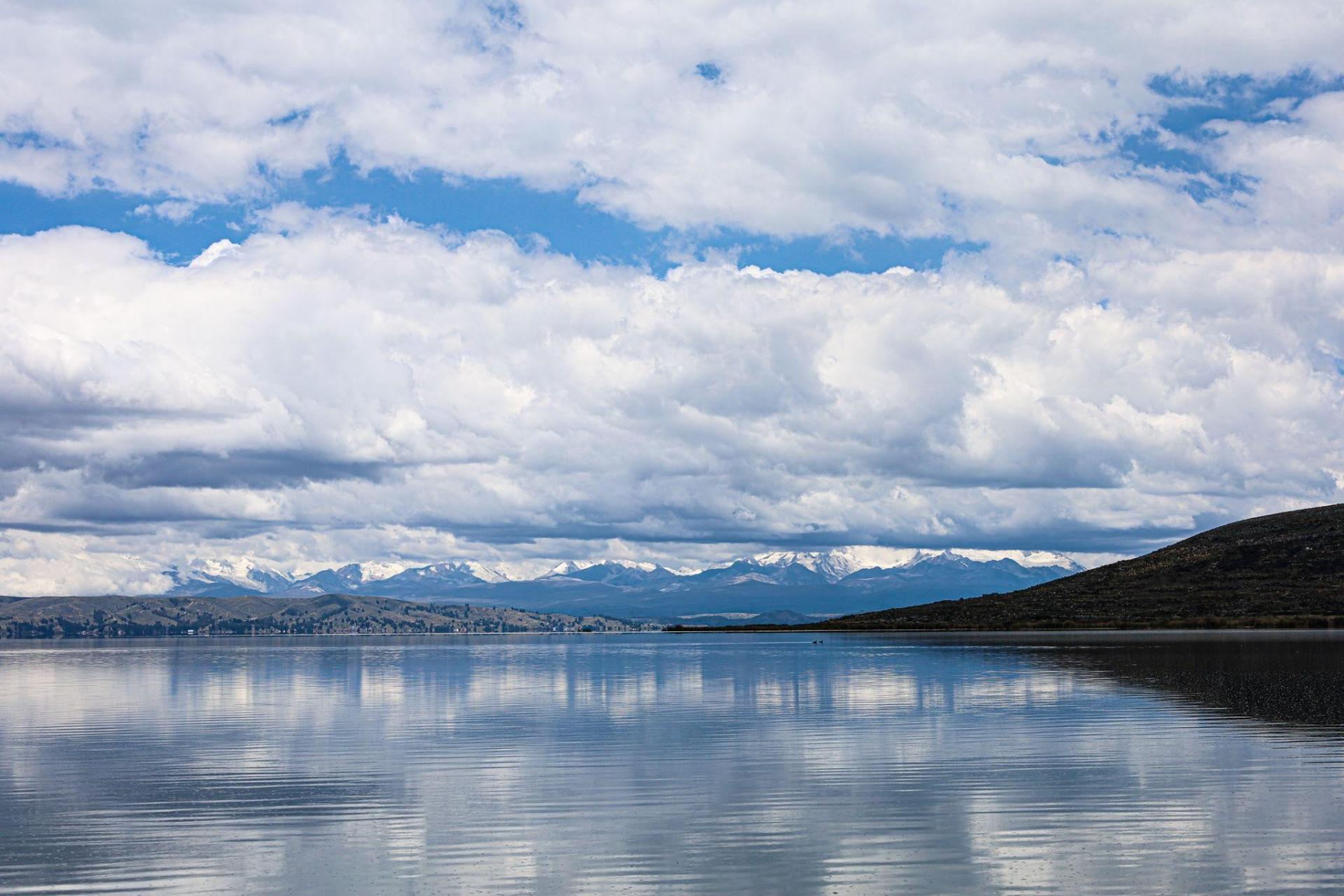
Lago Menor.
This region of Lago Menor is, according to Lazzaro, one of the shallowest along the Bay of Puno in Peru, which makes them “the two most sensitive areas to any disturbance of climatic or human nature.” Together with Limachi, we verified this. On a tour of Cohana Bay, located on the shores of Lago Menor, as soon as we got out of the car we confirmed the serious level of pollution—the bad smell of the Katari River, the dark color of its waters, and the large amount of garbage it carries are undeniable. However, birds that have inhabited these territories since time immemorial continue to arrive in this region; here, in Cohana Bay, we encountered dozens of pink flamingos. This region, which is now used by the inhabitants of Cohana for growing fodder, was a lake until a few years ago. Limachi told us that the lake has been receding more and more. We were surprised to learn this; as we traveled through the area, which is now passable by car, Google Maps indicated that we are moving over water, that there is still a lake in this place.
Lake Titicaca is an ancient being. In "The Book of the Permanent Observatory of Lake Titicaca," it is written that Lake Titicaca is one of the 20 oldest great lakes. It is thought to be at least 9,000 years old, but the lake is the result of a succession of very ancient lakes, such as Mataro, which existed more than 2 million years ago. During this entire period, Titicaca has undergone great transformations naturally, but in recent decades the changes have accelerated.
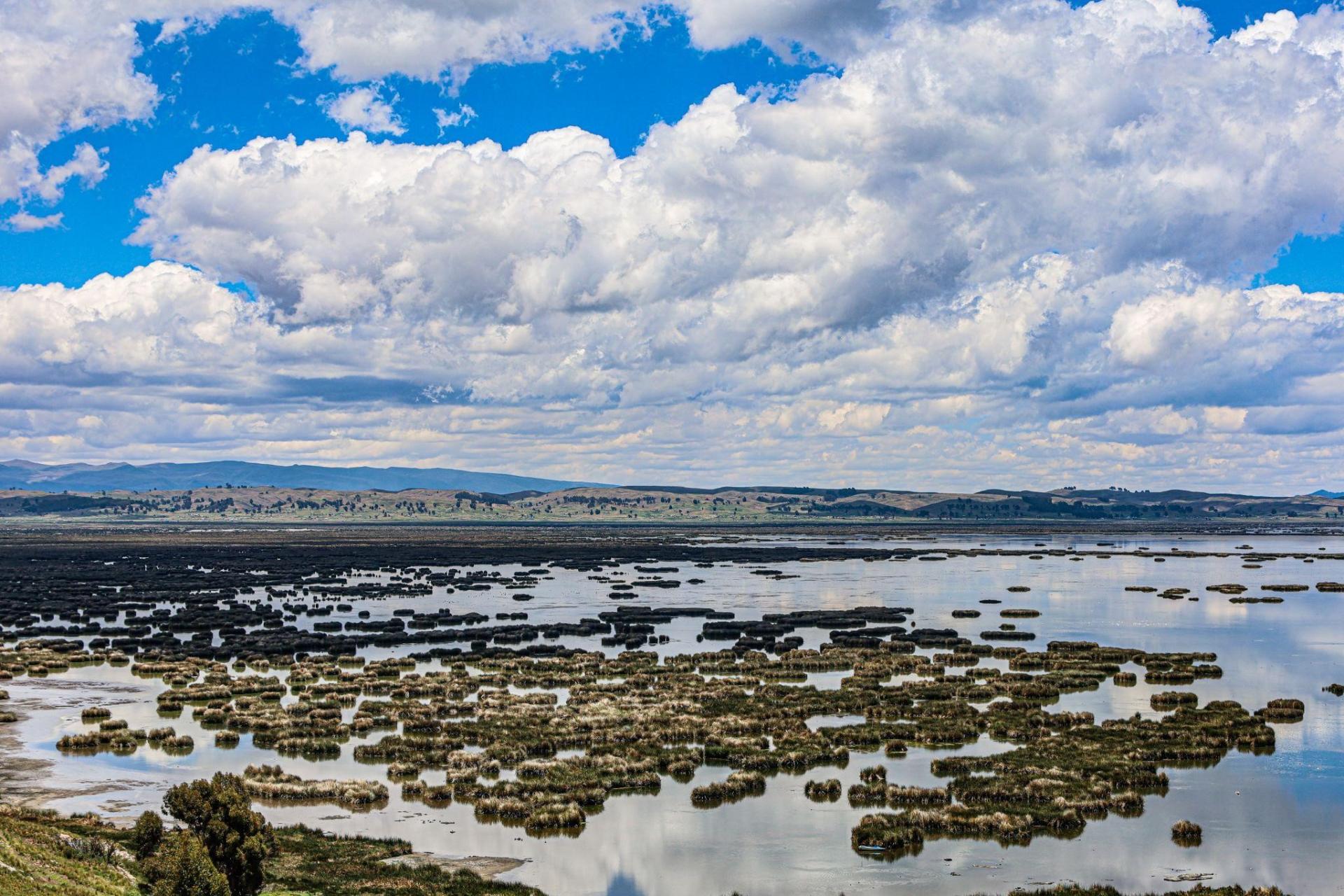
View of the cattails from Pariti Island, Bolivia.
We spoke with Gonzalo Lora, an environmental engineer, climate change expert, and activist for Lake Titicaca, who warned that “today, Titicaca is seriously threatened, because apart from the natural dynamics of desiccation that are occurring over the millions of years, there are the threats of climate change.” In addition, Titicaca “receives more or less the discharges of 3 million people, the sewers of 3 million people in Bolivia and Peru, the industrial park of El Alto, Juliaca, and Laja, pollution from livestock farming, and pollution from mining.”
The largest reservoir of drinking water in the South American Altiplano and an emblematic lake for the great Andean civilizations is at serious risk, along with the endemic flora and fauna that inhabit it and the riverside communities that rely on the lake for economic, cultural, and spiritual purposes. “Titicaca definitely goes beyond being a beautiful landscape, being an interesting place, being the largest body of water on the continent; Titicaca is essential to sustain the ecological dynamics of the Altiplano and probably a large part of the planet. Lake Titicaca evaporates more or less on average 500 tons of water per second. That is a lot of water; it is an ecosystem service that we could not replace in any way. All this makes Titicaca a heart of water,” Lora said.
When we arrived with Limachi at Pariti Island, he invited us to get off the boat, climb a hill, and look at the lake full of cattails. The brown and greenish patches contrasted with the blue of the lake. Here, at the top of this hill, we felt the wind strongly, cooling our faces and hands. In this area, Titicaca is still a deep blue. We looked at it and were convinced that, despite suffering the onslaught of climate change and pollution, Mama Qota is a being who resists, who regenerates, and who continues to provide life to this entire territory.
Listen to the radio documentary, “Mama Qota Is at Risk” at tinyurl.com/mamaqota and watch at vimeo.com/ 937717476.
Top photo: Pink flamingos in Cohana Bay, Bolivia.
